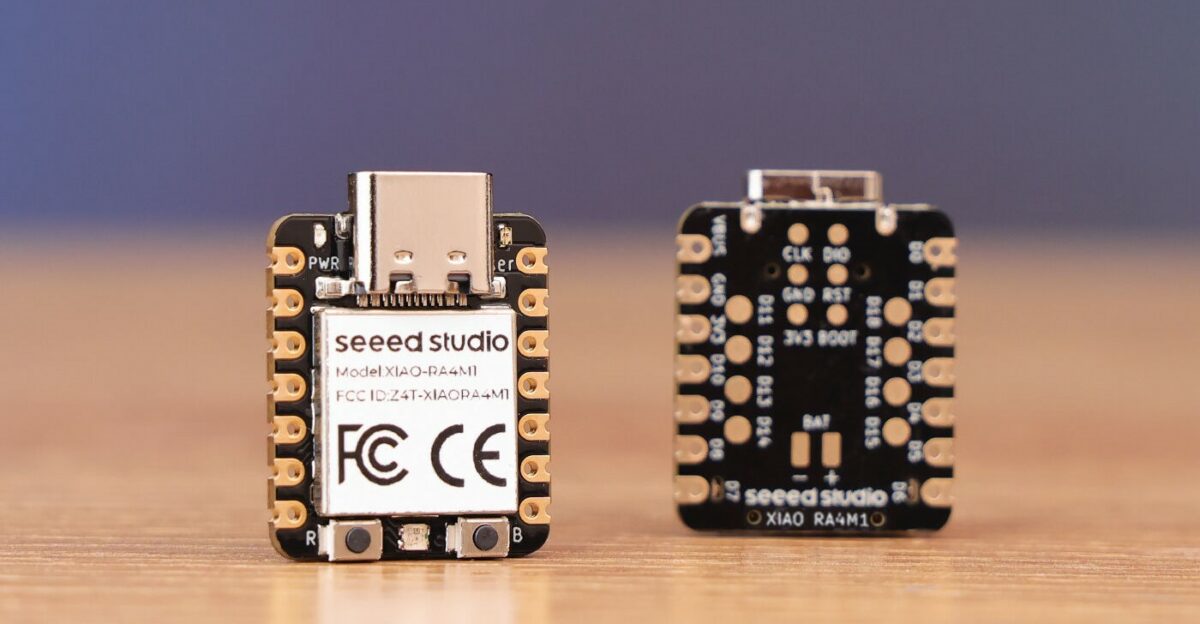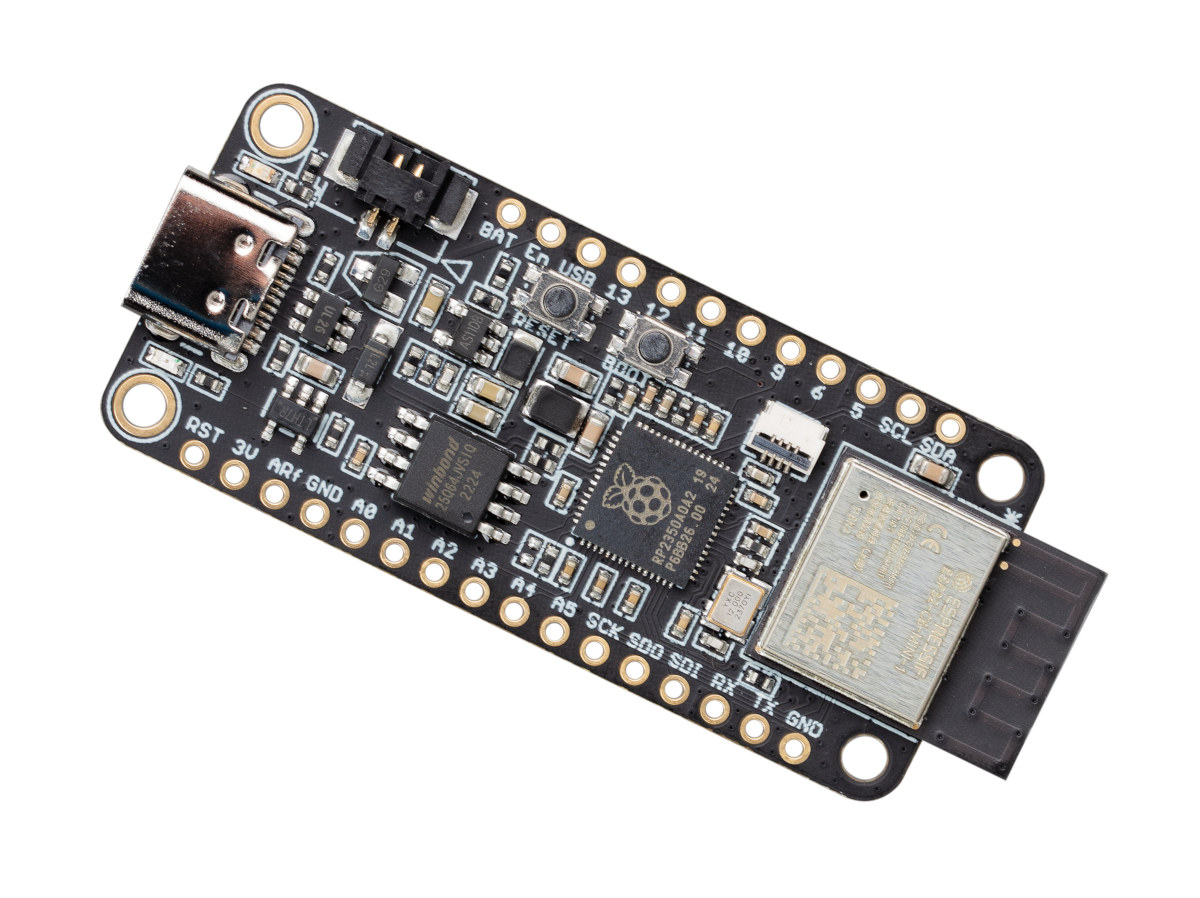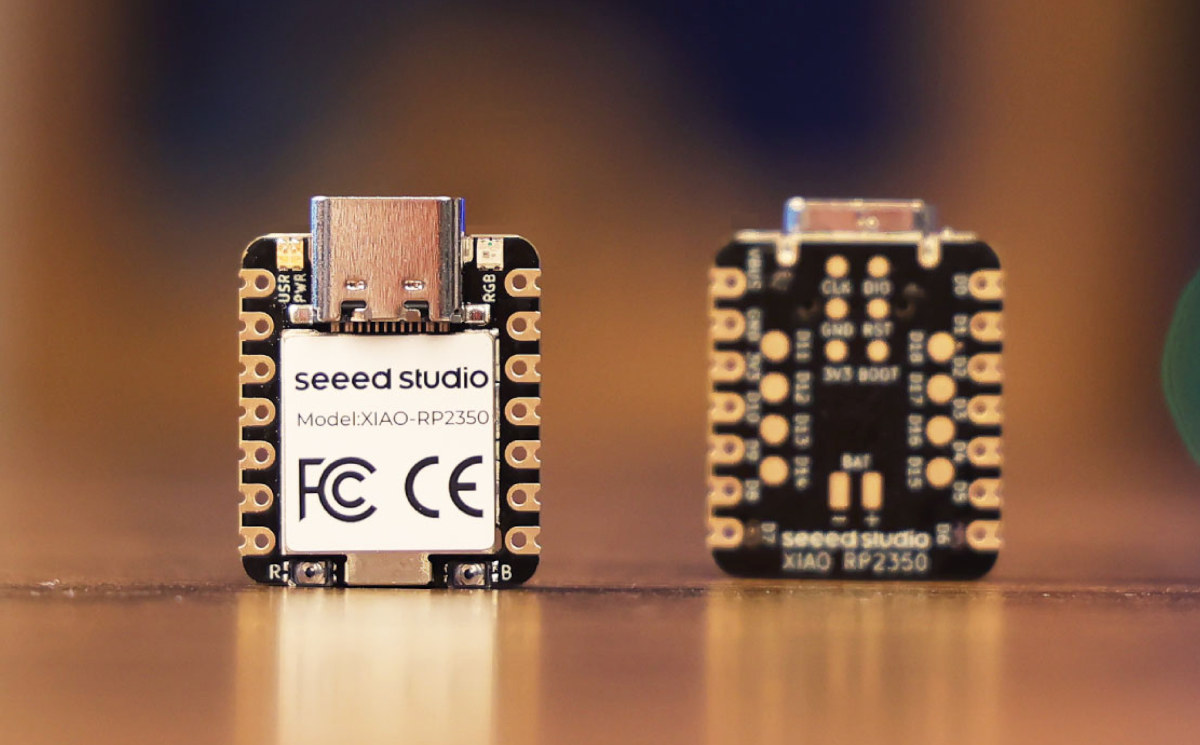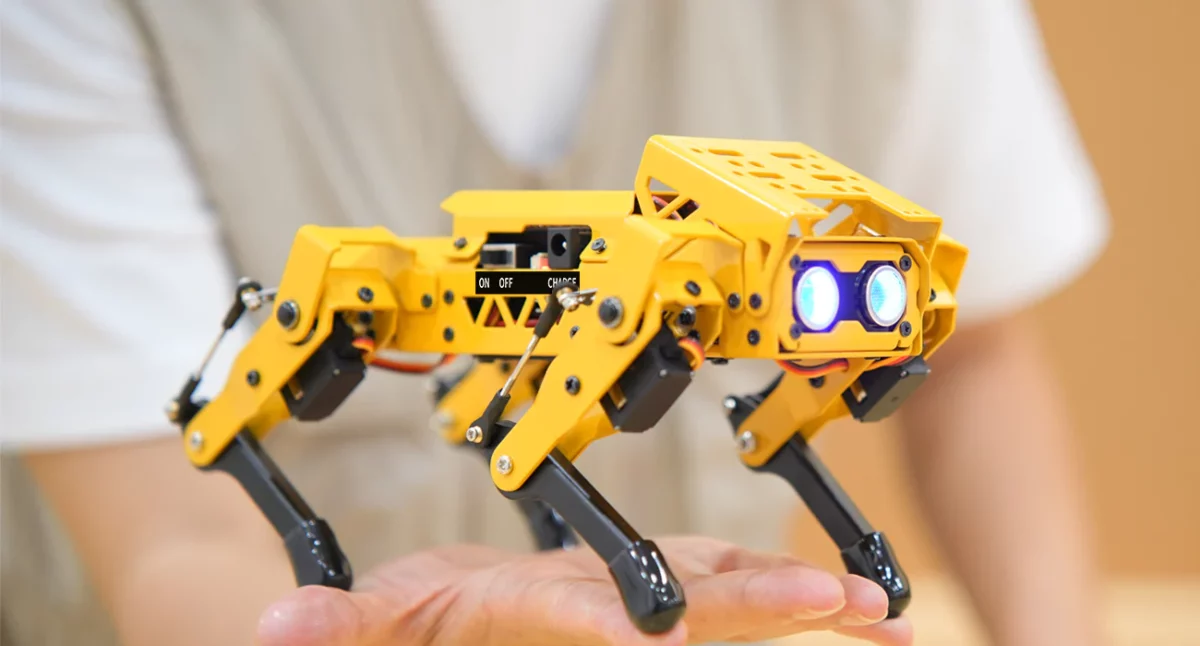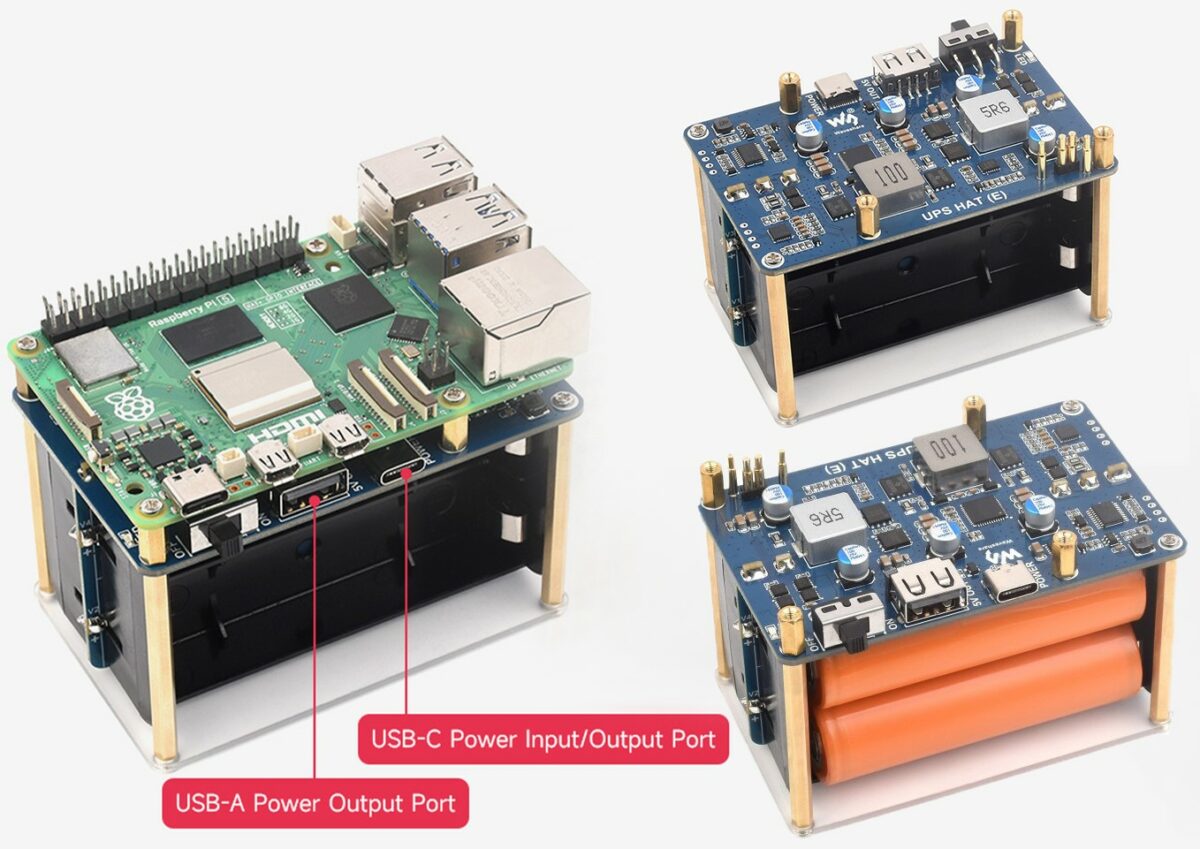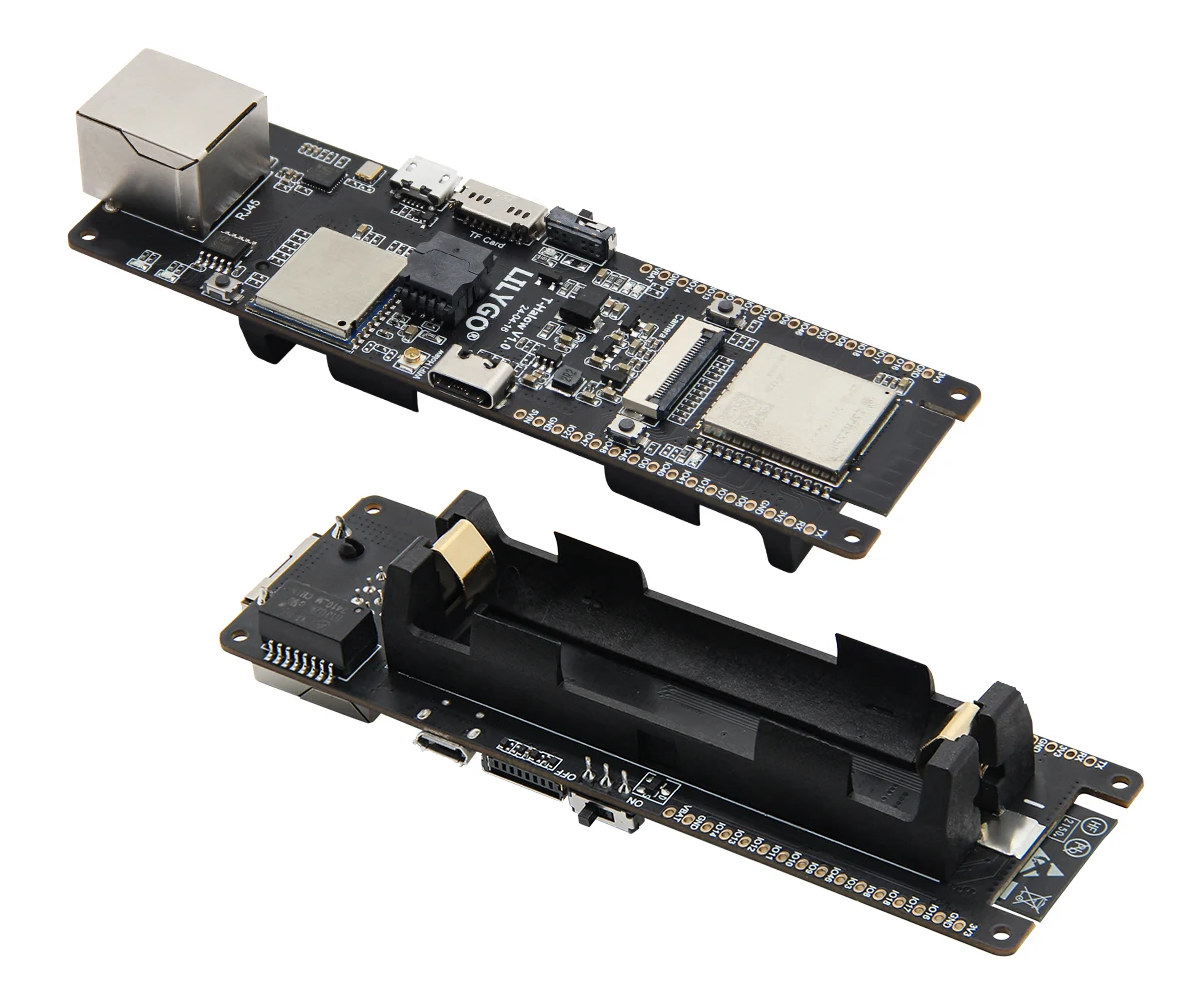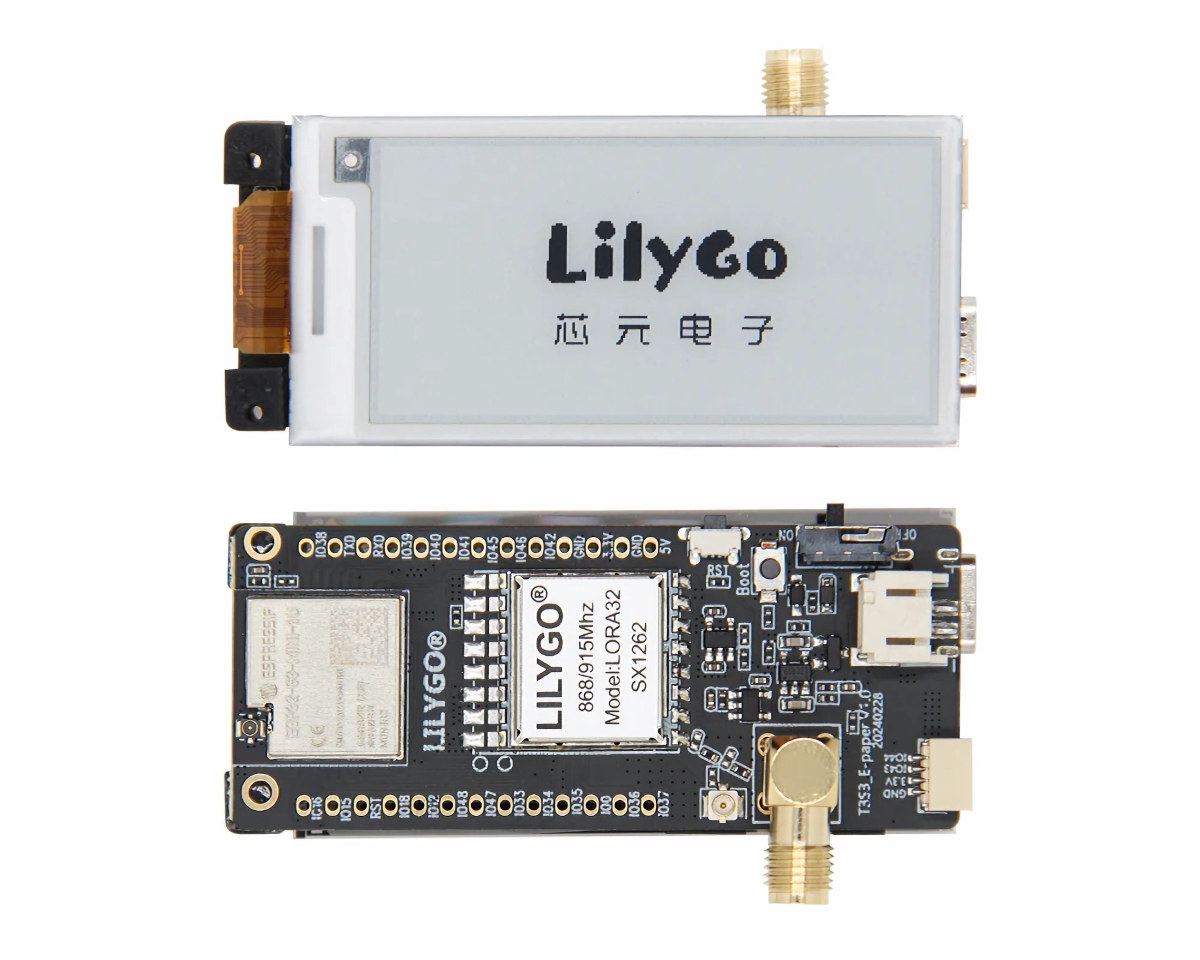Seeed Studio has added yet another member to their XIAO board family with the XIAO RA4M1 powered by Renesas’ RA4M1 32-bit Arm Cortex-M4 MCU. This compact board includes 256KB Flash, 32KB SRAM, a 14-bit A/D converter, a 12-bit D/A converter, a CAN bus interface, and onboard charging circuitry. It’s designed for low-power, battery-powered applications. The company started the XIAO family with the Seeeduino XIAO (Microchip SAMD21G18) in 2020, and since then they’ve made several other variants with different processors including the XIAO RP2350, XIAO RP2040, XIAO ESP32C3, XIAO ESP32S3, XIAO ESP32C6, and the nRF52840-based XIAO BLE. Feel free to check them out if you are interested in these boards. XIAO RA4M1 specifications: Microcontroller – Renesas RA4M1 (R7FA4M1AB3CFM) as found in Arduino UNO R4 CPU – Arm Cortex-M4F operating at up to 48 MHz Memory – 32KB SRAM Storage 256 KB code flash memory 8 KB data flash memory USB – 1x […]
$119 MoreSense MS-06 air quality monitor features a Sensirion SCD40 sensor and an ESP32-S3 MCU
The MoreSense MS-06 is an ESP32-S3-based air quality monitor that takes CO², temperature, and humidity readings through a Sensirion SCD40 sensor which offers reliable performance and a lifespan of more than ten years. The MS-06 monitor’s results are identical to the Aranet4’s (considered best-in-class), putting it in a pretty good spot accuracy-wise. It is the latest entry in the MoreSense line of air quality monitors and comes with a more compact design and a touchscreen display. The built-in web server runs an interface that displays measurements, historical data visualizations, setup options, and firmware updates. Operation is completely local; sensor data can be stored on the device or a microSD card. The MoreSense MS-06 air quality sensor can be used to control a ventilation system, contributing to significant energy savings. This can be achieved through your home automation system or by using a smart plug. MoreSense MS-06 specifications: Microcontroller – ESP32-S3 […]
Challenger+ RP2350 WiFi6/BLE5 board combines Raspberry Pi RP2350 MCU with ESP32-C6 WiFi 6 and Bluetooth 5.4 LE module
You don’t need to wait for the Raspberry Pi Pico 2 W to get a Raspberry Pi RP2350 board with WiFi and Bluetooth thanks to the Challenger+ RP2350 WiFi6/BLE5 board that combines an RP2350A microcontroller with an ESP32-C6 module offering 2.4 GHz WiFi 6 and Bluetooth 5.4 LE connectivity. The board follows the Adafruit Feather form factor with 28-pin through holes for I/Os making it compatible with FeatherWings add-on boards. It comes with a USB-C port for power and programming, and a JST connector plus a charging circuit for people wanting to connect a LiPo battery. Challenger+ RP2350 WiFi6/BLE5 specifications: Microcontroller – Raspberry Pi RP2350A MCU CPU Dual-core Arm Cortex-M33 processor @ 150MHz Dual-core 32-bit RISC-V processor @ 150MHz Only two cores can be used at a given time Memory – 520KB internal RAM 8KB OTP Storage Package – QFN-60; 7×7 mm Memory – 8MB PSRAM Storage – 8MB SPI […]
XIAO RP2350 is a tiny USB-C board based on Raspberry Pi RP2350 MCU
The XIAO RP2350 is an upgrade to Seeed Studio’s XIAO RP2040 board with a more powerful Raspberry Pi RP2350 dual-core Cortex-M33 or dual-core RISC-V microcontroller found in the just-launched Raspberry Pi Pico 2 board. The new Raspberry Pi RP2350 USB-C board has the same form factor but adds eight more GPIOs on the bottom with pads for a total of 19 GPIOs, and we lose two LEDs for serial port connectivity. Most people will still be fine with the XIAO RP2040, but if you need a more powerful microcontroller, extra memory, a few extra GPIOs, and built-in security, then the XIAO RP2350 will be an improvement. XIAO RP2350 specifications: Microcontroller – Raspberry Pi RP2350 MCU CPU – Dual-core Arm Cortex-M33 processor @ 150MHz (Note: again RISC-V is not mentioned at all by Seeed Studio, like for the Cytron MOTION 2350 Pro board) Memory – 520KB internal RAM 8KB OTP Storage […]
MechDog AI Robot Dog features ESP32-S3 controller, supports Scratch, Python, and Arduino programming
Hiwonder’s MechDog is a compact AI robot dog powered by an ESP32-S3 controller that drives eight high-speed coreless servos. It features built-in inverse kinematics for precise and agile movements and has ports for various I2C sensors such as ultrasonic and IMU sensors. The robot is equipped with a durable aluminum alloy frame and a removable 7.4V 1,500mAh lithium battery for power. MechDog integrates with the ESP32-S3 AI vision module, supporting dual-mode network communication either AP Hotspot Direct Connection Mode or STA LAN Mode so that users can access a designated URL webpage via an app or PC for real-time monitoring using a high-definition camera. Also, this robot dog supports various sensor modules, including a touch sensor, light sensor, dot matrix display, and programmable MP3 module, allowing for secondary development and expansion, offering extensive creative possibilities. Previously, we wrote about the Waveshare UGV AI Rover, which features a 2mm thick aluminum […]
Waveshare UPS HAT (E) for Raspberry Pi 5/4/3B+ takes four 21700 Lithium batteries, supports USB PD 3.0
The Waveshare UPS HAT (E) is a UPS expansion board for Raspberry Pi 5/4B/3B+ that supports four 21700 Lithium batteries and includes a battery fuel gauge IC for monitoring voltage, current, and capacity. The USB Type-C port is compliant with the PD 3.0 standard and allows for 40W fast bi-directional charging, and a high-power buck chip provides a 5V/6A output. Additionally, it supports I2C for real-time status updates. Previously, we wrote about the wider SupTronics Raspberry Pi 5 UPS HAT, which supports four 18650 batteries and delivers up to 5V with a higher current output of 5A. This HAT has no Type-C support and uses a DC jack and XH2.54 connector for 6V-18V input. Feel free to check it out if you’re interested in this product. Waveshare UPS HAT (E) specifications: Compatibility – Raspberry Pi 5 / 4B / 3B+ USB Interfaces USB Type-C Input/Output – Supports multiple voltage levels […]
LILYGO T-Halow is an ESP32-S3 board with long-range WiFi HaLow, OV2640/OV5640 camera support
LILYGO T-Halow is an ESP32-S3 board equipped with a WiFi HaLow module with up to 1.2km range, a connector compatible with OV2640 and OV5640 camera modules, and an 18650 battery holder for power, as well as several GPIOs for expansion. We first wrote about 802.11ah low-power long-range WiFi standard operating at 900 MHz in 2014, but adoption has been slow and we’ve seen a few 802.11ah (WiFi HaLow) chips from Newracom and Morse Micro over the years, as well as USB adapters, a Raspberry Pi HAT, a mini PCIe card, gateways, and some development boards. All those rely on a Linux host, but the LILYGO T-Halow features a TX-AH WiFI HaLow module from Taixin Semiconductor that’s controller by AT commands through an ESP32-S3 or a micro USB port. LILYGO T-Halow specifications: Wireless modules ESP32-S3-WROOM-1 wireless module SoC – ESP32-S3 dual-core Tensilica LX7 microcontroller @ up to 240 MHz with 2.4 […]
LILYGO T3S3 E-Paper combines ESP32-S3 WiFi & BLE SoC with LoRa module, 2.13-inch e-Paper display
LILYGO T3S3 E-Paper is an ESP32-S3 WiFi and Bluetooth LE development board with a 2.13-inch e-Paper display and an SX1262 LoRa module that should make it suitable for off-grid messsaging even under sunlight. LILYGO has made some ESP32-S3 boards with an e-Paper display and some ESP32-S3 boards with a LoRa module, but unless I’m mistaken, the T3S3 E-Paper is the first board from LILYGO that combines ESP32-S3 SoC with e-Paper display and a LoRa module. It builds upon the earlier LILYGO T3S3 board with a 0.96-inch OLED. LILYGO T3S3 E-Paper specifications: ESP32-S3-WROOM-1U wireless module SoC – ESP32-S3FH4R2 dual-core Tensilica LX7 microcontroller @ up to 240 MHz with 2.4 GHz 802.11n WiFi 4 and Bluetooth 5.0 LE connectivity Memory – 2MB PSRAM Storage – 4MB SPI flash IPEX antenna connector Storage – MicroSD card slot Display – 2.13-inch e-Paper display (DEPG0213BN) with 250×122 resolution; size: 48.55 x 23.70mm Wireless 2.4 GHz […]


